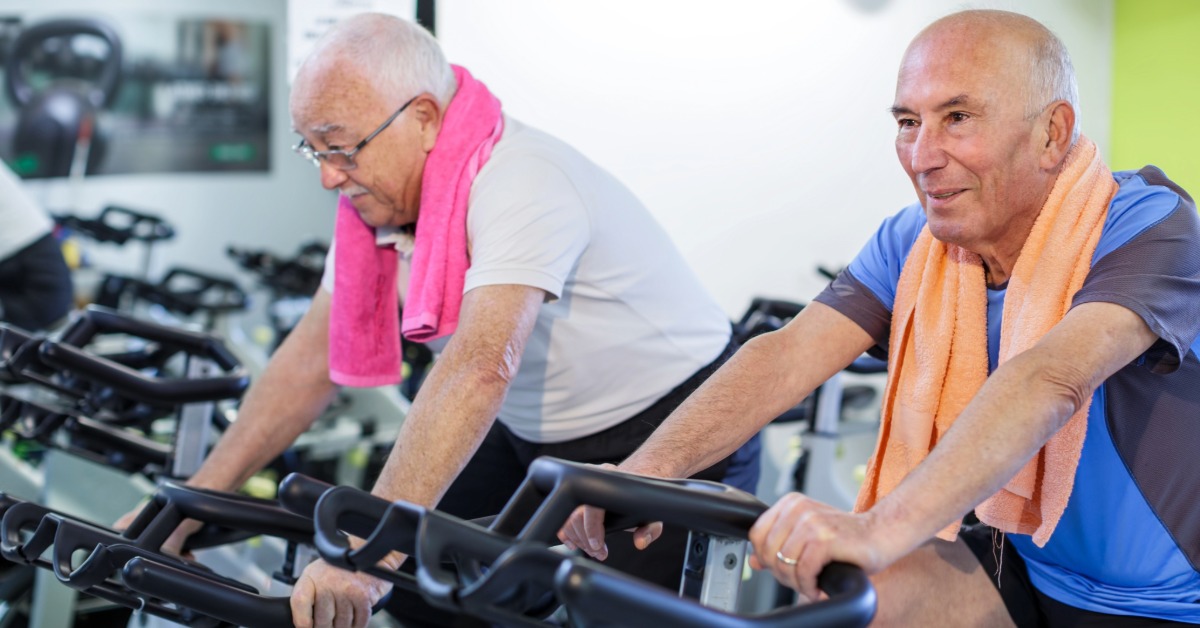1. Introduction: Why Joint Flexibility Matters More Than You Think
Struggling with morning stiffness, cracking knees, or aching joints after even mild activity? You’re not alone.
As we move past age 30, our joints naturally begin to lose flexibility. Long hours of sitting, reduced physical activity, weaker muscles, and everyday stress all add up — causing stiffness, discomfort, and reduced mobility. Many people assume that joint problems are inevitable with age, but that’s simply not true.
The real question is: Can simple daily exercises keep your joints flexible, strong, and pain-free without long workouts or complicated routines?
The answer is yes — and you can start today.
In this guide, you’ll discover easy joint flexibility exercises, practical tips to relieve stiffness naturally, and smart lifestyle strategies to prevent long-term joint pain. And because joint health often needs more than movement alone, we’ll also highlight trusted supplements from Health Spark, such as Arthrogenol and Flex 4 Force, created to support mobility and keep your joints feeling their best.
2. Understanding Joint Flexibility: What’s Really Going On Inside Your Body?
Before you start stretching and moving, it helps to understand how joints actually work.
Your joints are made up of:
-
Synovial fluid – a natural lubricant that keeps your joints moving smoothly
-
Cartilage – soft, protective tissue that cushions bones
-
Ligaments & tendons – connective tissues that stabilize and move your joints
-
Muscles – essential for controlling movement and reducing impact on joints
So why do joints stiffen with age?
• Reduced lubrication
Synovial fluid production slows over time, making your joints feel dry and stiff.
• Muscle tightness
Sedentary lifestyles cause muscles to shorten and stiffen, reducing flexibility.
• Weaker supporting muscles
When muscles weaken, joints absorb more pressure — leading to discomfort.
• Reduced blood flow
Poor circulation means less nutrient delivery to joint tissues.
But here’s the good news: Movement stimulates synovial fluid, increases blood flow, loosens tight muscles, and helps maintain healthy cartilage. Even a few minutes each day can make a noticeable difference.
3. Warm-Up First: Gentle Movements to Wake Up Your Joints
Before doing any flexibility routine, start with a warm-up. Think of it as telling your body, “Hey, we’re about to move — get ready!”
Warm-ups:
-
Reduce pain
-
Improve range of motion
-
Protect joints from strain
-
Increase circulation
3-Minute Joint Warm-Up Routine
1. Shoulder Rolls
Roll shoulders forward and back, loosening upper-body tension.
2. Hip Circles
Hands on hips — make slow, wide circles to warm the pelvic area.
3. Ankle Rotations
Lift one foot at a time and rotate the ankle clockwise and counterclockwise.
4. Wrist Mobility Circles
Gently rotate wrists to release stiffness from typing and daily use.
Simple warm-ups like these prepare you for effective movement and help prevent injuries — especially important if you experience morning stiffness or sit for long periods.
4. Top Simple Exercises for Better Joint Flexibility & Pain Relief
These exercises are gentle, beginner-friendly, and require no equipment. They target the areas most prone to stiffness.
4.1 Neck & Shoulders — Relieve Tension and Improve Mobility
• Neck Tilts
Gently tilt your head side to side, releasing tension built up from screens and poor posture.
• Shoulder Stretches
Bring one arm across your chest and hold — this improves shoulder mobility.
• Arm Cross Stretch
Targets the shoulder blade area and reduces upper back tightness.
• Doorway Chest Stretch
Stand in a doorway with arms at 90 degrees and lean forward slightly to open the chest.
These movements relieve stiffness and promote better alignment — especially for anyone working at a desk.
4.2 Spine & Back — Keep Your Body Aligned
• Cat–Cow Stretch
Alternating between rounding and arching your back releases spinal tension and improves flexibility.
• Seated Spinal Twist
Sit and gently twist your torso. Excellent for the lower back and digestion.
• Pelvic Tilt
Lie on your back and gently tilt your pelvis up and down — great for lumbar mobility.
These exercises help reduce back pain, improve posture, and support everyday movement.
4.3 Hips & Lower Back — The Foundation of Your Mobility
Tight hips are one of the most common causes of joint stiffness.
• Hip Flexor Stretch
Essential if you sit for long periods.
• Glute Bridges
Lift your hips upward to activate glutes and support your lower back.
• Figure-4 Stretch
Cross one ankle over the opposite knee to loosen the hips.
• Standing Hip Swings
Swing each leg forward/backward and side-to-side to warm up hip joints.
More hip mobility = less pressure on knees and spine.
4.4 Knees — Strengthen Without Strain
Knee pain often comes from weak muscles rather than damaged joints.
• Seated Leg Raises
Strengthen the quad muscles that stabilize the knees.
• Wall-Supported Squat Holds
Build strength without putting pressure on joints.
• Hamstring Stretch
Keeps the back of the legs flexible and reduces tension on the knees.
• Calf Raises
Strengthen lower-leg muscles that support knee stability.
These gentle knee exercises help prevent pain and improve daily movement.
4.5 Ankles & Feet — Improve Balance and Stability
Healthy ankles protect the knees and hips and improve overall balance.
• Toe Raises
Lift toes off the ground to strengthen stabilizer muscles.
• Ankle Rotation Circles
Loosen the joint and improve mobility.
• Heel-to-Toe Walk
Great for balance and strengthening the foot muscles.
Micro Tip:
Just 10–15 minutes of these exercises a day can significantly improve flexibility in a week.
5. Strengthening Exercises to Protect Joints Long-Term
Flexibility is important — but strength is what protects your joints from pain and wear.
Stronger muscles mean:
-
Less joint pressure
-
Better shock absorption
-
Improved mobility
-
Lower risk of injury
Top Low-Impact Strength Exercises
• Resistance Band Training
Perfect for gentle strengthening without strain.
• Step-Ups
Build hip, knee, and ankle strength.
• Light Dumbbell Routines
Improve arm and shoulder strength to support daily movement.
• Bodyweight Core Workouts
A strong core keeps your spine aligned and reduces back pain.
These exercises help strengthen joints naturally and support long-term comfort.
6. Lifestyle Habits That Maximize Joint Flexibility
Joint health isn’t only about stretching. Daily habits matter just as much.
• Stay Hydrated
Water maintains synovial fluid — your body’s natural joint lubricant.
• Maintain a Healthy Weight
Every extra pound adds pressure to the joints, especially knees.
• Eat an Anti-Inflammatory Diet
Include:
-
Omega-3 rich foods (salmon, walnuts, flaxseeds)
-
Turmeric
-
Leafy greens
-
Berries
These foods help reduce joint inflammation naturally.
• Improve Your Posture
Avoid slouching and take movement breaks every 30–45 minutes.
• Prioritize Sleep and Recovery
Your body repairs joint tissue while you sleep.
These habits are the foundation of lasting joint health lifestyle improvements.
7. Natural Supplements That Support Daily Joint Comfort
Exercise and lifestyle changes go a long way — but sometimes your joints need extra nutritional support.
That’s where Health Spark joint supplements come in.
7.1 Arthrogenol
A powerful formula designed to:
-
Support joint comfort
-
Improve mobility
-
Reduce everyday stiffness
-
Help aging adults stay active
Perfect for anyone seeking natural relief from joint discomfort.
7.2 Flex 4 Force
An advanced joint-support supplement formulated to:
-
Enhance flexibility
-
Support cartilage and connective tissues
-
Improve range of motion
-
Strengthen bones naturally
Ideal for active individuals, athletes, or seniors wanting to maintain mobility.
Why Supplements + Exercise Work Best Together
-
Exercise improves flexibility and blood flow
-
Supplements nourish your joints internally
-
Together, they support long-term comfort and prevent stiffness
This combination helps keep your joints strong, flexible, and pain-free.
8. Common Mistakes People Make When Exercising for Joint Health
Avoid these errors to protect your joints:
• Overstretching
Pushing too hard can cause inflammation.
• Ignoring Pain Signals
Pain means your joint needs rest — don’t push through it.
• Skipping Warm-Ups
Cold muscles are stiff muscles.
• Lack of Consistency
Occasional workouts won’t fix stiffness.
Daily movement is key.
• Doing High-Impact Exercises Too Soon
Running or jumping without proper strength can harm joints.
By avoiding these mistakes, you’ll ensure safer, more effective results.
9. Conclusion: Your Path to Strong, Flexible, Pain-Free Joints Starts Today
You don’t need long workouts or intense routines to maintain healthy joints.
A few minutes of simple exercises every day can dramatically improve flexibility, reduce stiffness, and prevent joint pain.
Pair your new routine with smart lifestyle habits — like staying hydrated, eating anti-inflammatory foods, and maintaining good posture — and you’ll feel the difference within days.
And for added support, supplements like Arthrogenol and Flex 4 Force from Health Spark can help nourish your joints from the inside, making your movement smoother and more comfortable.

